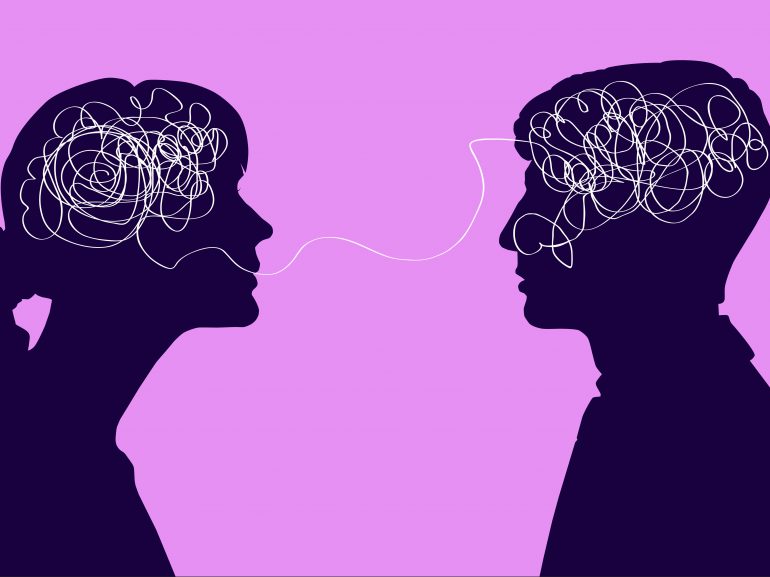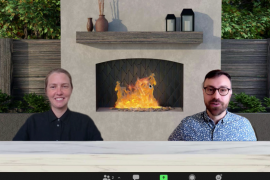With around 75,000 students at The University of Sydney it should come as no surprise that occasionally they, and we, might feel differently about certain things. More often than not it’s on something like the best place to get lunch off-campus (this ex-student votes for Thai La Ong in Newtown) but sometimes disagreements can be more personal. To a certain extent attending University is surely supposed to be confronting; students enrol expecting to learn new things and be exposed to new ways of thinking (hooks 2009:88), but just as we can’t always predict the new food offerings King St provides almost weekly we may not always be able to prepare or be immediately ready for the directions conversations in the classroom may take.
This article offers potential strategies for engaging with difficult conversations in the classroom, both in the moment when they pop up unexpectedly, and in planning for them as part of course or unit content.
Consider these stackable – the ideas presented in each may be relevant for both. In this context, I define difficult conversations as those which challenge strongly-held beliefs or things that may be unshakeably known. These may come from limited exposure to alternative ideas or histories, perhaps because of cultural backgrounds, firewalls, or social media echo chambers. They may also be sensitive, potentially triggering highly emotional responses due to lived experience with traumatic events. As a starting point, I would consider the following example scenarios to have the potential to trigger difficult conversations:
- An international relations or cultural heritage class where the role of UNESCO in geopolitical conflict is discussed, giving the example of the site of Hebron/Al-Khalil Old Town in the West Bank being inscribed to Palestine.
- A pharmacy tutorial where the professional responsibility of a pharmacist to provide advice on potential medication side effects is discussed and the contraceptive pill given as an example, but the discussion turns towards whether pharmacists’ personal religious beliefs could lead to them refusing to dispense certain medication.
- The first lecture of a semester where students are asked to identify their country of origin via a poll or survey as part of a ‘getting to know you’ activity, and both Hong Kong and Taiwan are listed as countries of origin alongside China.
- A geosciences or engineering tutorial discussing the design of oil pipelines using the Keystone Pipeline as an example, while in breakout rooms a heated discussion emerges between students about the ethics of running oil pipelines through First Nations’ land.
We may enter a classroom expecting a good deal of separation of the ‘self’ from unit content, but it’s important that we recognise both our students and ourselves as whole beings, variously prepared and unprepared for conversations that may challenge beliefs that we held as certainties before entering the classroom, or those that take us back to moments that we could not anticipate. Sometimes these conversations are a vital part of learning and teaching, sometimes they are not and just happen. For the former, we can plan and develop a strategy to prepare ourselves and students weeks or even months ahead. The latter can be just as, or even more, challenging for teachers due to their unexpected nature, but it can be helpful to think through likely or potential scenarios and how you may want to react to them.
Regardless of the type of difficult conversation, it’s important that we enter into any such situation actively considering our pastoral care responsibilities towards our students, and in my and Sydney colleagues’ opinions separating them from our feelings on academic freedom. As the linked article puts it, “(we) are… responsible for cultivating a respectful environment, which gives students fair opportunities to grow intellectually”. My beliefs have certainly changed on quite a number of things since I began my undergraduate studies 15 or so years ago – but they did so gradually and certainly not during the first few classes. That said, these conversations can also lead to a certain heaviness for teachers, whose own intersections and/or personal experiences may not have been considered by students or the curriculum; we are also whole beings who may or may not be prepared for what comes our way in the classroom. Take care of yourself, and create a supportive network of peers with whom you can discuss challenging moments in the classroom.
Must we have difficult conversations?
It can be tempting to try and avoid these conversations altogether, and in some cases it may be completely reasonable to do so. There are some cases, though, when these conversations must take place due to their proximity to unit learning outcomes. It is my strong recommendation that potentially sensitive or triggering topics be highlighted ahead of time, with students offered perhaps more time to work through topics, an alternative way to engage, and/or a chance to discuss topics directly with the unit coordinator.
A trauma-informed and culturally responsive approach offers a useful framework for discussing any difficult or challenging topic:
Trauma-informed and culturally-responsive teaching is “an approach to teaching that empowers students to challenge social injustices, in addition to being responsive to intersecting social and cultural identities, such as age, ability status, gender, gender identity, ethnicity, immigration status, language, religion, race, sexual orientation, and socioeconomic status.”
See Sherwood et. al., (2021) for more, as well as practical suggestions on how to integrate this approach.
A framework for difficult conversations
When encountering difficult conversations, either in planned teaching contexts or in the wild, it may be helpful to consider three principles, developed in consultation with teachers across the University by the Educational Innovation team and alongside our former Deputy Vice-Chancellor (Education) Professor Pip Pattison.
Principle 1: Transparency
In being transparent we acknowledge that:
- some conversations may be contentious or challenging
- multiple perspectives may be present on any issue
- productive discussions can be tricky to facilitate
We may not know or be able to predict the bounds of any discussion, and are honest with our students in our management of these conversations.
Principle 2: Psychological safety
In considering psychological safety we:
- consider that our conversations could be personally challenging
- ask all participants to approach issues and each other respectfully
- try to be conscious of invisible needs
The establishment of an enquiring and respectful classroom dynamic is key to success, and shared norms ensure that all students are active and engaged participants in their space. Psychological needs are inherently invisible and can be difficult to predict, and this must be taken into account.
Principle 3: Acknowledging our lenses
In acknowledging our lenses we:
- consider that our positionality affects our understanding and management of data, situations, or facts
- encourage consideration of our and our students’ lenses and personal limits
- consider class diversity when planning for difficult conversations
Modelling this for students ensures that they feel seen and valued, and encourages humility and open dialogues.
Managing ‘in the moment’
Unexpected student reactions to concepts or ideas that may seem to us as teachers to be either fact or relatively innocuous happen at some point in all of our teaching careers. We can rarely predict them, but we must do our best to support students through them. When a student reacts unexpectedly to a difficult topic, first and foremost consider harm reduction for both that student and others in the class who may be affected by their reaction or words. It is imperative that we respect our students’ rights to speak freely in the same way we hope for our own right to academic freedom to be respected, but we must also keep in mind both the learning outcomes of the class and our responsibility to ensure students abide by the Student Charter. In this situation, section 8(1) of the Charter is relevant, and in summary asks that we respect each other regardless of our gender, religion, race, sexuality, or disability, that we act honestly and ethically, that we do not engage in bullying, harassment, or discriminatory behaviour, and that we support academic freedom and freedom of speech.
Discussions and statements that are not in line with the Student Charter and that risk the safety of others in the class should not take place. Additionally, if discussions fall outside of the scope of the teaching context and are not contributing to the learning of all students concerned, they can also be paused or parked on those grounds. It may equally be the case that unexpected reactions can be utilised as a learning moment; consider if the perspective shared can be safely integrated into the teaching taking place. Note that it is fine to pause such a topic and return to it in a future class with more time to prepare and consult.
Conflict is natural, and engaging in meaningful critical dialogue must be something that we prepare students for in the same way we prepare them for disciplinary skills, but must be done in safe environment where the personhood of all present is respected.
After an unexpected difficult conversation occurs, it’s a very good idea to check in both with yourself and with any and all students concerned to make sure that they feel safe and comfortable in the class. You may want to offer an invitation to contact you after class with any reflective thoughts or concerns. If the student who reacted unexpectedly did so in a way that runs counter to the Student Charter, consider whether you feel comfortable catching up with them after class to discuss what they said and your reaction to it. If not, or perhaps also even after you do so, make sure to contact your unit coordinator to outline the incident to them directly and forward them any student concerns that you need support with managing. Finally, make sure that you’re ok. As mentioned above, our intersections as teachers are often invisible to students and these conversations may also impact us. Consider whether you may want to take advantage of the employee wellbeing support offered by the University, including our Employee Assistance Program provider Benestar.
Planning for difficult conversations
Sometimes we have the distinct luxury of both anticipating and planning for difficult conversations that may take place in our classrooms. These suggestions will be relevant for units of study that centre entirely on one particularly challenging topic or conversation, but also can be utilised for contexts where the topic is just, for example, Week 10’s content. We do strongly recommend that teachers consider their own experiences and lenses when planning for challenging conversations and their management, and in particular highlight Chapter 12 of Stephen Brookfield’s ‘Becoming a Critically Reflective Teacher‘ (2017: 207-224) as a blueprint for how to do so.
Build trusting environments
Key in preparing our students is not so much disciplinary or content knowledge, but rather the creation of a safe and trusting environment where they feel comfortable both to express themselves and be challenged (see chapter 15 of bell hooks’ Teaching Critical Thinking, ‘Conflict’ (2009: 85-89) for more on why this is foundational to productive conflict). There are many ways to do this; working together to decide on class norms can be done towards the beginning of semester in any environment that involves significant collaboration or discussion. Parker J. Palmer’s Touchstones for Creating Trustworthy Space also offer a useful framework, one which Amy McHugh-Cole & Matthew Tyne from the National Centre for Cultural Competence shared at the 2022 Sydney Teaching Symposium (their presentation Disrupting the Margins, Decentering the Middle: Creating Culturally Safe Teaching and Learning Spaces is available for review).
True safety lies in knowing how to discern when one is in a situation that is risky but where there is no threat, and then again to be able to recognize when a situation, even a classroom situation, is unsafe and to respond accordingly (hooks 2009:88-89)
Move slowly and together
Being forced to engage in something that challenges our strongly-held beliefs is hard for most of us. Consider the ways in which new perspectives and ways of thinking can be slowly introduced to students in order to prepare them for one particular conversation. David Pace (2003) offers a set of strategies utilised in preparing their students for a challenging discussion in a semester-long ramp up. Suggestions offered along with practical advice for implementation include:
- Model the behaviour students will need to learn to successfully engage with the issue
- Provide students with experience in seeing issues from multiple perspectives
- Give students practice at contextualising challenging issues
- Help students practice using evidence to support arguments
- Approach the controversial argument incrementally
- Engage students in a ‘practice’ discussion on a lower-stakes topic
- Actively scaffold and structure the conversation, interjecting and moving it along when necessary
Value preparation for participation
Linked to Pace’s strategies suggested above, it’s important that students come to challenging conversations prepared in a way that reflects the context of the discussion. This preparation is the price of admission to the conversation, and could take the form of pre-readings integrating multiple perspectives, a reflective writing task, or even just verbal agreement to participate with respect to pre-agreed class norms. Ideally, this preparation would set a tone for the discussion and expose students to its likely parts or course, preparing them for what is to come and bringing to light early any feelings, emotions, or perspectives that may need further time or attention. This is also a good way to flag topics that may be triggering or particularly emotionally sensitive – thoughtful and curriculum-embedded content warnings support widening and meaningful engagement.
Encourage questioning
When thinking about how to have productive conflict, bell hooks (2009:87) offers the useful comparison of a strong, trusting interpersonal relationship; rarely would we expect to have one of these without conflict, but these conflicts take place in a safe environment where connection and communication prevail in their resolution. Ideally, we would seek to understand the other’s perspective, and we do this most productively through asking questions and listening deeply (one of Palmer’s aforementioned touchstones). When students disagree with one another encourage them to turn to wonder, and to ask questions until they understand.
Leave space for emotions
These conversations are often challenging because they are held so dearly to us, and it is important that we acknowledge and respect this even when these emotions are not core. Pulse checks through polling tools or unsigned pieces of paper can be utilised during discussions, allowing students space to pause at certain points and feed back on how they are feeling. These also give teachers a chance to actively monitor when discussions are proceeding well, and when they should be parked for another day. Reflective writing is another tool that can be utilised, either within the last 10 minutes or so of class environs or afterwards, with students invited to share their reflections if they wish to do so. Teachers themselves may also wish to share their feelings and/or emotions with students (where appropriate) after a challenging conversation, to normalise the fact that these conversations can be deeply impactful and as their own reflection.
Tell me more!
- Explore Module 20 Supporting diverse experiences in learning and teaching in the Modular Professional Learning Framework and join us when it next runs as a live session.
- Engage with resources and training offered by the National Centre for Cultural Competence.
- Read up on our suggestions for creating culturally safe and responsive environments: A shared sense of place – empowering culturally responsive teaching






2 Comments